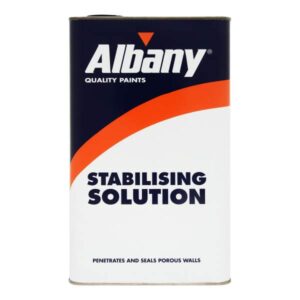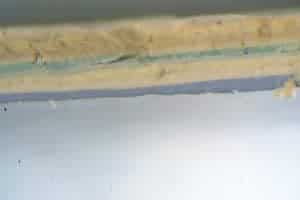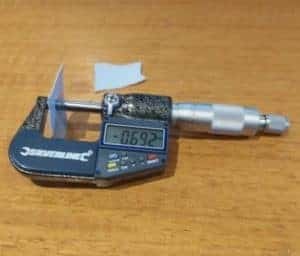Some problems never leave us.
Ongoing issue with applying modern water based paints over existing under bound /chalk coatings such as Lime Wash and Distemper.
After decades of experience, specifiers are still firefighting known problem relating to flaking have failed to fully address the issue to eliminate the root cause to prevent the recurrence of this issue.
The use of Lime wash goes back as far 7500BC. In the mid 1800 Distemper as a commercial coating was launched by, The Wall Paper Manufactures Company, located in Darwen Lancashire. Initially this was marketed as Hollins Distemper then changed to WalPapMur and then Walparmur.
At his time if a more durable, washable was required the chalky coating would be overcoated with a thinned down coat of of Linseed Oil and Turpentin e
e
to consolidate the chalky finish.
Following the two world wars and the extensive building projects Walparmur was the brand leader for coating ceiling and walls up to the time when water based emulsion paints were introduced in the late 1940 and early 1950’s.
When this new emulsion paint was introduced and used to overcoat lime or distemper surfaces in place of the original linseed oil based sealer,

manactures introduced a clear or slightly tinted alkyd product to consolidate the chalky, powdery surfaces.
At this time specifications for this new sealer coating was generally quoted as a stabilising solution and should be brush applied whereby the brushing action was worked into the under bound chalky substrate to provided a stable base for subsequent water or oil based coatings.
Only too frequently the use of this stabilising solution was incorrectly specified as it was considered that any surface which looked suspect such as: cracks or surface spalling would need to be stabilised even though the surface condition was not chalky or porous. (see: Paintcheckplus News ‘Stabilising or Not’
Photo 1: Where a stabilising solution has been applied to a nonporous surface resulting in the finish being glossy consequently the adhesion of water based masonry finishing being poor.
One major factor often overlooked is the weight to the overall thickness of the paint coatings.
On average the weight of 5 litres of water based emulsion/acrylic wall paint varies between 6.5 and 7 Kilograms, the differential relating to the solids content of the individual product.
As an example the weight of 5 litres of paint (minus the tin) is 6.5KG although this will vary between manufactures.
Using combined data from several manufactures looking at the volume solids, wet film thickness, dry film thickness and

the manufactures recommended spreading rate per litre, the dry weight per m² of the applied material can be calculated
along with the expected film thickness. This on average for water based materials is 30µ micrometres. Based on the
average dry film thickness of 30µ micrometres per coat being calculated and compared with the sample removed from
site was 629µ micrometres which equated to 21 single coats of paint.
In this instance the specifier has not taken the weight of the film thickness into consideration.
Rather than produce a planned maintenance programme the authority decided on a patch and repair procedure.
The Problem Continues
Until specifiers stop addressing just the problem at face value and don’t look at the underlying cause of the problem continues…….
NB. The illustrations shown were taken in 2022 from a building which dates back to 1942.
Paintcheckplus, has been produced in a digital format for immediate access and reference at a one off life time subscription to include all future additions and updated.